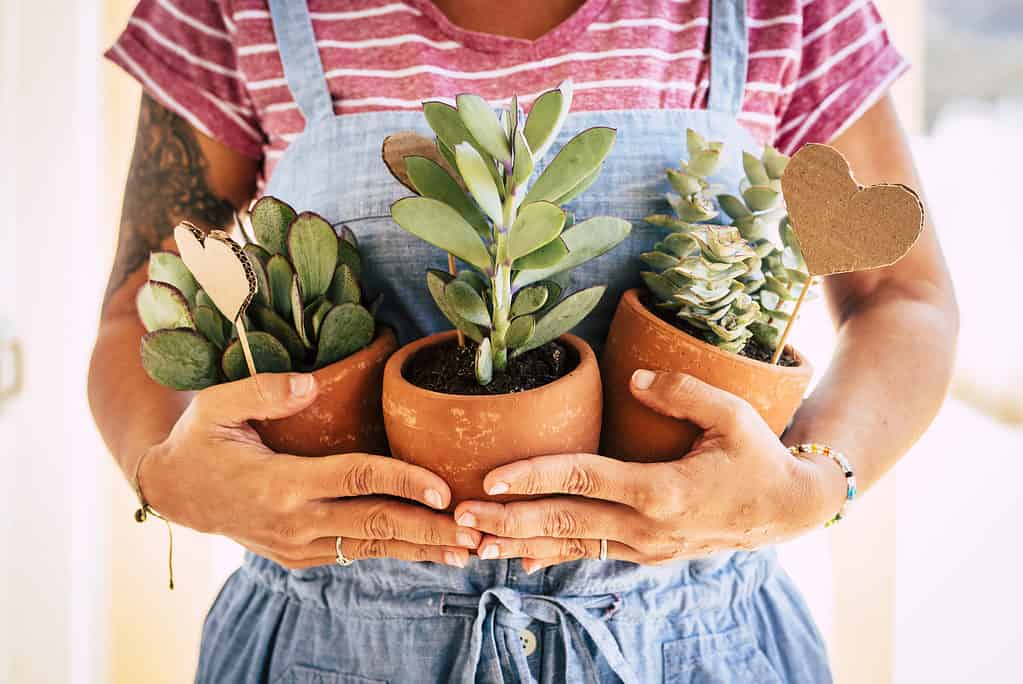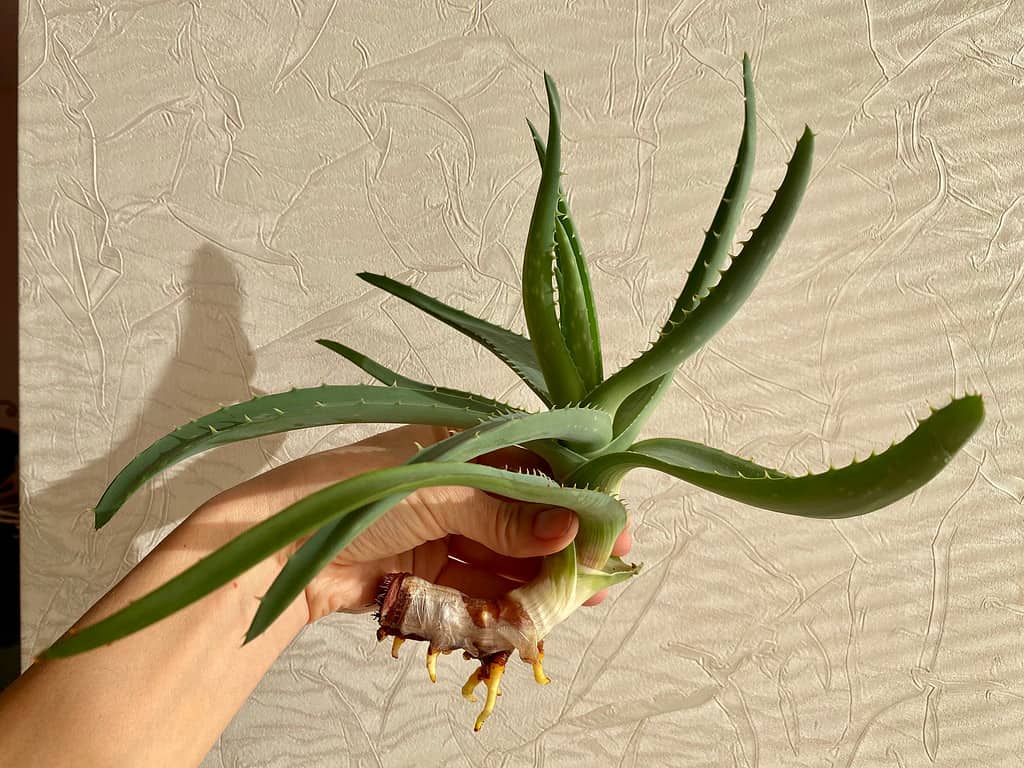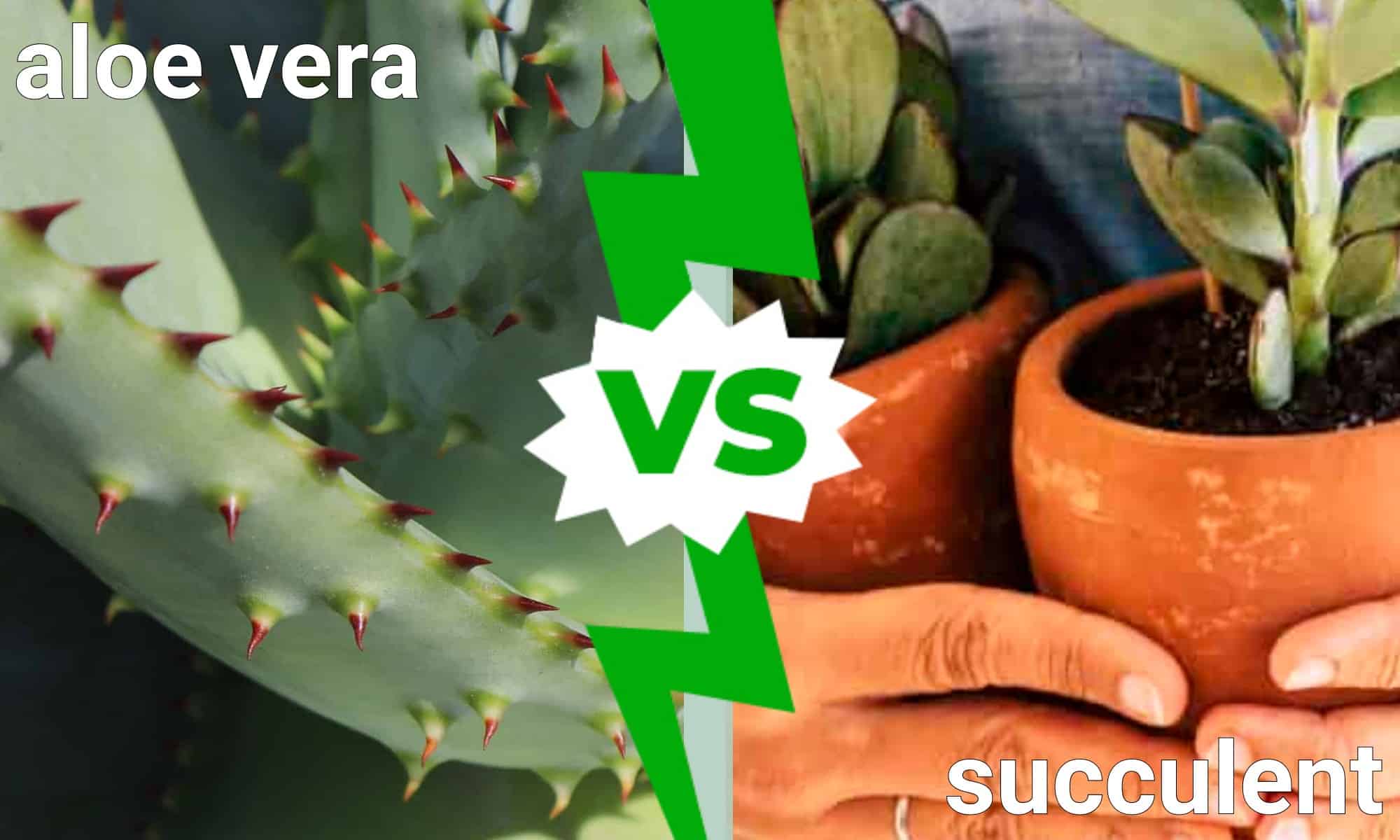Aloe vera is a well-known and loved plant that many indoor gardeners use for its nourishing properties. This desert plant is a popular ingredient in skincare products and is easy to care for.
There’s confusion about the differences and similarities between aloe vera and succulents. In this article, we’ll dive into the world of succulents and aloe vera, exploring their similarities, differences, and unique characteristics.
Succulent vs. Aloe Vera: What Is a Succulent Plant?
The term “succulent” is an unofficial descriptor to identify plants with certain traits. It’s not a taxonomic category.
In other words, there’s no one order, class, or family with a scientific name indicating whether a plant is a succulent. Similarly, some taxonomic categories have several plants that are succulents and many that aren’t. There are over 60 plant families that have at least one succulent.
Botanists identify succulents by shared characteristics, such as thick, fleshy leaves optimized for water storage in arid environments. These plants also share an adaptation in their stomata — tiny openings, like little mouths, on the surface of a plant’s leaves and stem.
A plant’s stoma opens and closes to absorb carbon dioxide for photosynthesis. A succulent stoma only opens at night to prevent transpiration (water loss) throughout the hot desert days.
Some well-known succulents include cacti, jade plants, agave, and of course, aloe vera.

Some well-known succulents include cacti, jade plants, agave, and of course, aloe vera.
©iStock.com/simonapilolla
Succulent vs. Aloe Vera: What Is an Aloe Vera Plant?
An aloe plant is a type of succulent in the genus Aloe L. It’s known by its scientific name, Aloe vera, though many simply call it aloe. There are more than 500 other species of aloe, though Aloe vera is the most popular.
Aloe vera is recognizable by its spiny green-gray leaves with subtle white spots and ridged edges. A relatively small plant, this aloe species typically grows 8-10 inches tall and no more than 12-14 inches wide. It’s often confused with Haworthia succulent plants.
In ideal growing conditions, Aloe vera will bloom. The flower stalk of Aloe Vera can grow up to three feet tall and bears an impressive cluster of tube-like flowers in shades of yellow, orange, and red.
Aloe grows in subtropical locations around the world, originating in Africa (particularly Madagascar) and the Arabian Peninsula. You can also find Aloe vera in the Southern United States and Mexico, spanning down into Central America.
Aloe vera has limitless applications. It’s best known for its positive impacts on skincare, burn treatment, and wound care. Many grocers also sell Aloe vera leaves for culinary use, adding it to smoothies, salads, and beverages.

An aloe plant is a type of succulent in the genus
Aloe L.It’s known by its scientific name,
Aloe vera, though many simply call it aloe.
©Lara Field Gomersall/Shutterstock.com
Succulent vs. Aloe Vera: Key Differences
While Aloe vera shares some similarities with other succulents, it also has distinct differences in appearance, growth habits, medicinal properties, hardiness, and care requirements.
The key thing to remember when comparing succulent vs. aloe vera is that all aloe plants are succulents, but not all succulents are aloe plants.
Thousands of succulent species and cultivars have unique growing habits, appearances, and care needs. Aloe vera is one species of plant in that category.
Succulents come in all shapes, sizes, and colors. For example, living stones are small, rounded, and low-growing in clumps. String succulents, like the string of pearls or string of bananas, grow in vines. Aeoniums grow on tree-like stalks. Aloe species tend toward shades of green with spiky fronds.
While other some other succulents are believed to have medicinal properties, none have been explored or proven to the extent of Aloe vera. There are also a few other edible succulent species, though Aloe vera should be kept out of reach of pets as it can make them sick.
Succulent vs. Aloe Vera: Growth Tips
Most succulents prefer ample sun exposure, warm temperatures, and well-draining soil with infrequent watering — and Aloe vera is no exception. However, there are some key differences in care between succulent species.
Aloe vera prefers bright, indirect sunlight for at least six hours per day. Place it in a sunny West or North-facing window, or set it back slightly from a South or East-facing window. Aloe vera is sensitive to scorching in the summer and cold drafts in the winter, so be mindful of these risks when placing your plant.
Use a well-draining cactus or succulent soil and water infrequently, letting the top inch dry before watering again. Place your Aloe vera in a terra cotta pot or planter with drainage holes to prevent root rot.
If you live outside USDA zones 10-12, winter your Aloe vera indoors. Fertilize with succulent-friendly plant food 1-2 times during the spring and summer growing seasons, avoiding fertilization during the dormant winter period.
Propagate Aloe vera by transplanting pups that grow around the parent plant. Aloe vera is a slow-growing plant that likely won’t produce pups or bloom until its fifth growing season or later.

You can propagate
Aloe veraby transplanting pups that grow around the parent plant.
©Mala Iryna/Shutterstock.com
Thank you for reading! Have some feedback for us? Contact the AZ Animals editorial team.








